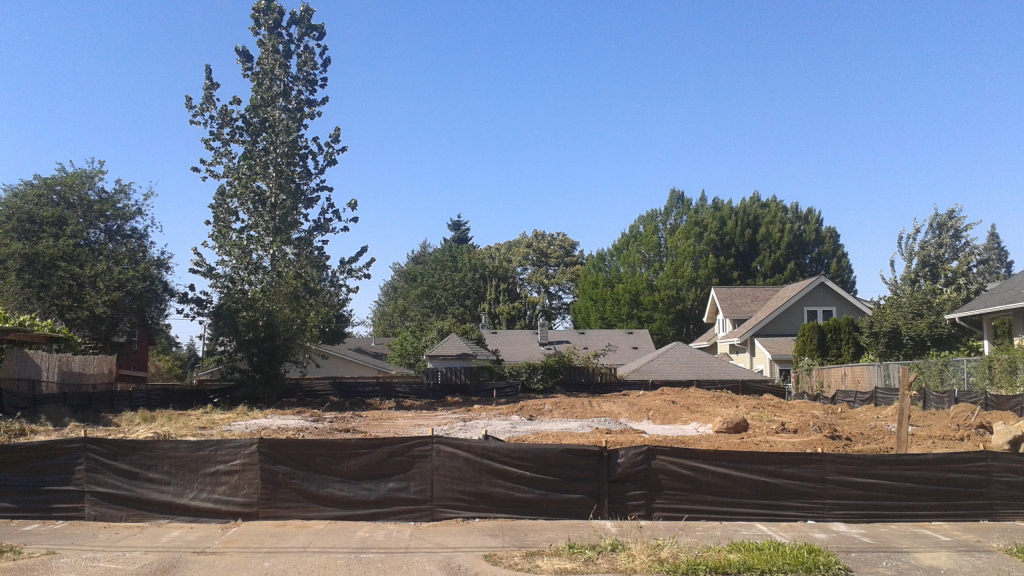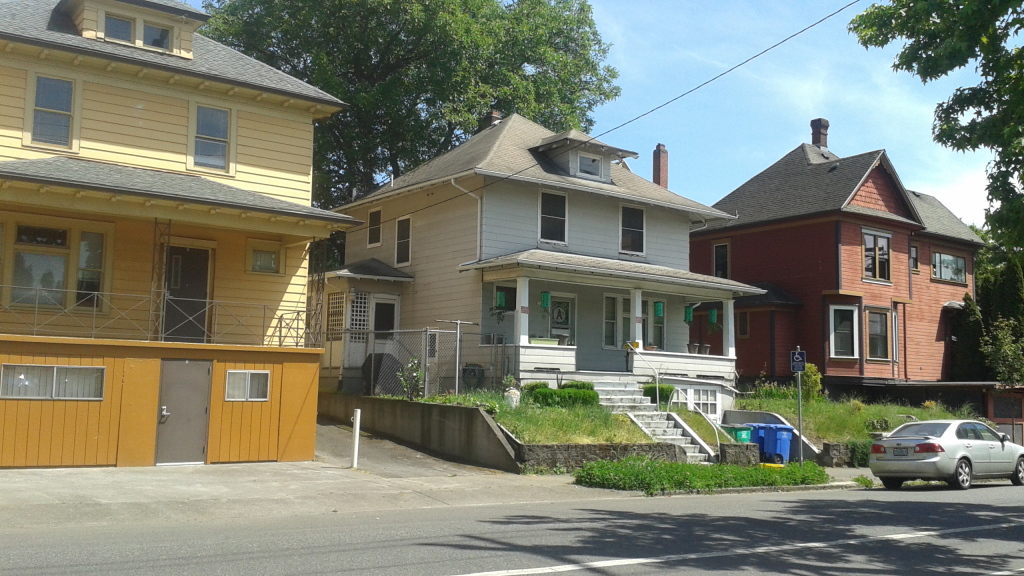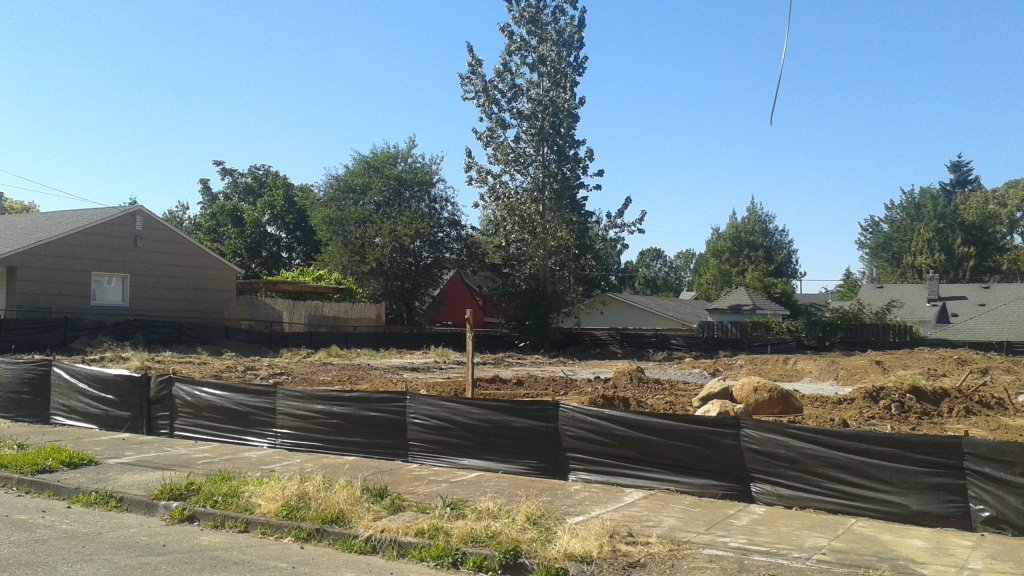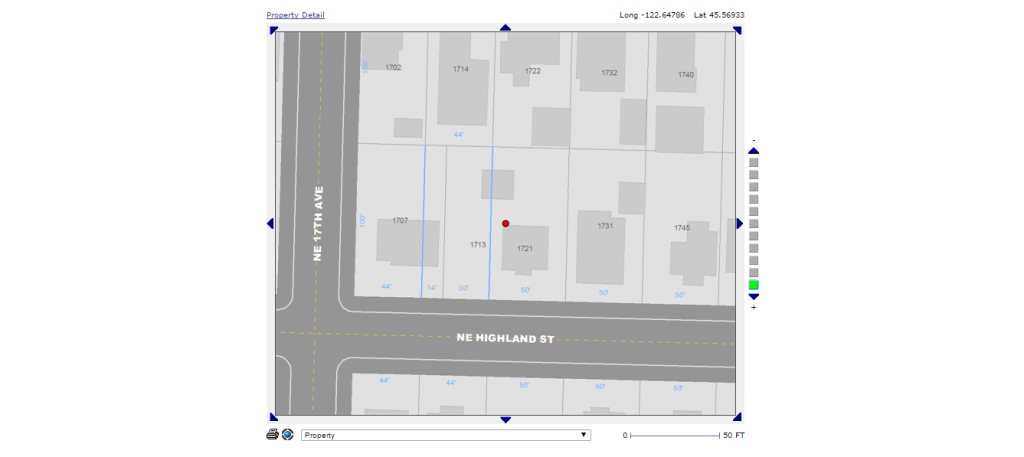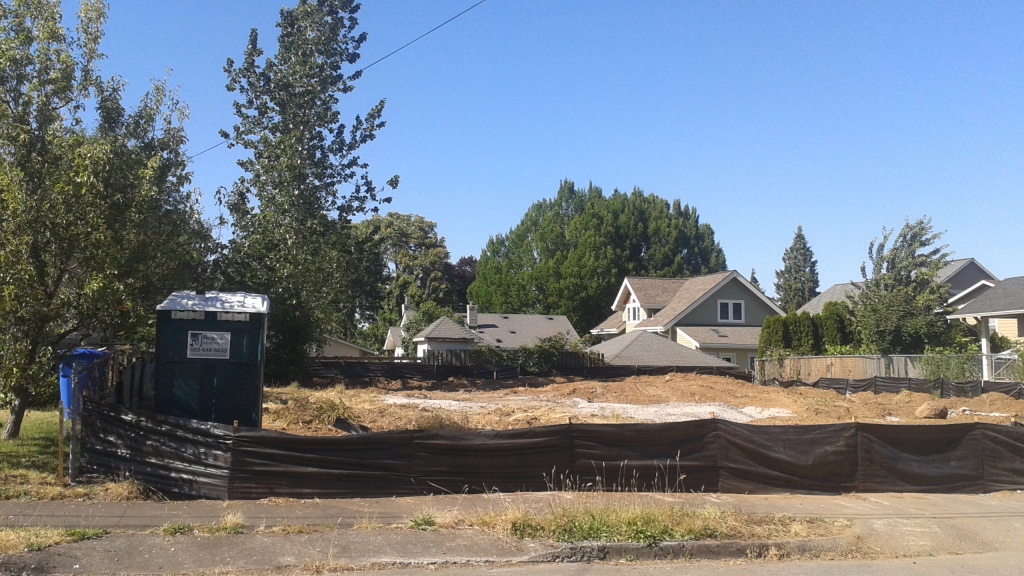- Update: Woodlawn Foreclosure Demolished, Trees Removed
- Remmers to Demolish Foreclosed Woodlawn Home
PORTLAND, Ore. – Following a foreclosure and subsequent sale to a Beaverton developer earlier this year, an 87-year-old single-family home in the Woodlawn neighborhood has been demolished and will be replaced by multiple new residences in an example of underlying lot line utilization, with an interesting twist.
The house, reported on by the Portland Chronicle in May, was built in 1928 and sat on an 8,000-square-foot lot. The property was purchased by Everett Custom Homes for $260,000 in May, a price that is about $24,000 less than Zillow’s estimate of its market value.
Everett Custom Homes is registered to Vic Remmers in Beaverton.
The developer applied for demolition of the house in April and the permit was issued in May.
The property is located in an R5 zone, meaning there can be one residential dwelling per 5,000 square feet in future land divisions. However, this is another case where the developer is not applying for a land partition but rather to reopen underlying lots of record underneath the current parcel setup.
In an R5 zone such as this one, construction on historic lots of record does not need 5,000 square feet of land, but rather 3,000 square feet as the underlying lots are grandfathered into zoning regulations provided they predate 1979.
On this 8,000 square foot parcel, then, two new homes would be allowed under the underlying lot regulations. But this case presents another interesting facet of the underlying lot rules. The historic lot line does not evenly bisect the 8,000-square-foot parcel, but is rather offset and includes both property from this parcel as well as the one directly to the west.
In this case, a reader told the Portland Chronicle, only the property that holds more than half of the underlying lot may utilize it for development.
“Only the property owner who has more than 50 percent of the underlying lot may use the underlying lot line for the purposes of subdivision,” the reader said. “In this case, you could have two identical lots next to each other in the R5 zone but because one has the majority of the shared underlying lot (which straddles them), one could be subdivided into two substandard lots and the other couldn’t.
“I am quite certain that very few property owners in Portland know this — but the developers do,” the reader noted.
A construction permit for one new home on Northeast Highland Street was issued June 12, while the other is still under review.

